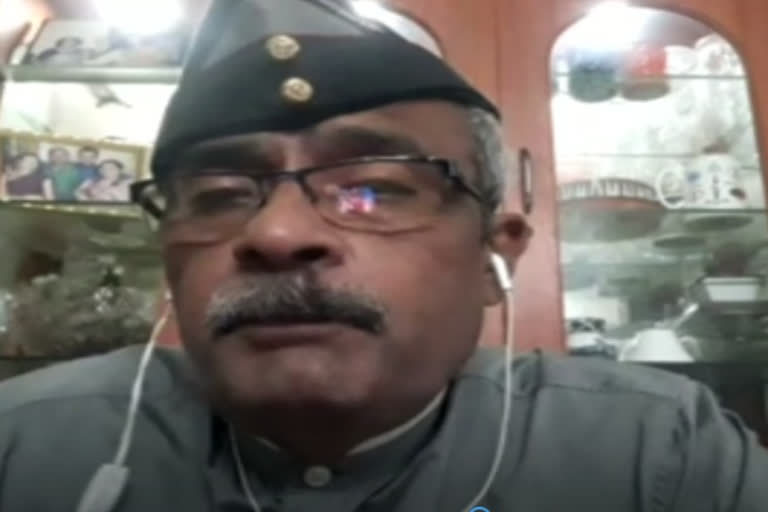Hyderabad: Brigadier Prabir Kumar Sanyal, a retired strategist of the Indian Armed Forces, who worked as Deputy Assistant Commander of Integrated Defence Staff in 2006-08, speaks to ETV Bharat on India-China standoff, the violent clash and the way forward.
Brigadier Prabir Kumar Sanyal is of the opinion that whatever China does is based on deep research and with a long-term aim. According to the former servicemen, China is trying to deflect adverse attention of its domestic issues and the clash was to remind India to remain in South Asia and give up global ambitions.
Here are the excerpts from the interview:
Q: Why China is not coming up with a figure on the casualties suffered during the Galwan clash?
A: The China administration and its People's Liberation Army (PLA) are very secretive. They do not want to disclose the truth even to their citizens. The casualties in Tiananmen Square where PLA used its forces to subjugate protests, the number of Uighars killed and the number of COVID-19 victims: all the figures remain a secret. In the standoff, the US agencies based on intelligence received said that at least 35 were killed from the Chinese side including a PLA officer. But the truth will never come from China.
Q: Editorial in Global times, the news website under the auspices of the Chinese Communist Party, claimed that due to self-restraint China is not coming up with figures as it may escalate the situation. Do you agree with this view?
A: Global times is a mouthpiece of communist government in China. The way they have bought out various newspapers, a website showing China in good light. India has not done that.
China wants to avoid a 'revenge factor' as it is reeling with domestic troubles. Trump is after them, there is a second wave of COVID-19 coming to Beijing putting the city under lockdown. China has problems with Japan, the South China Sea. The people of China are unhappy with President Xi.
Q: Dhoklam issued started on June 16, three years ago. Do u see a connection? What was the P-14 all about?
A: It is difficult to link it up. This issue started with a Chinese buildup in Ladakh and we did our correspondent build up. The clashes broke out and the events overtook everything.
The LAC has been understood by the troops both sides. Scuffles break out when incursion happens to both the sides. Until then, scuffles are limited to using hands or maybe your boyd. But on 15th and 15th night, they came with iron rods and sticks with nails embedded on them. This changed the complexion of the understanding of the type of behaviour expected by troops of both countries.
Q: Does 'military engagement' come under any international convention?
A: Border discussions come under the Geneva convention. The protocol is that troops must be unarmed. Ever since President Xi has taken over, PLA function under him and directly report to him.
Whether this was initiated by President Xi? One doesn't know. But the awkward behaviour has upset the understanding we had. We are looking how to respond next time.
Q: Is it a fallout to the removal of Article 370 ?
A: China has quoted various issues which have caused anger. One such issue was when the parliament discussed Aksai Chin. Secondly, was the revocation of Art 370. They believe that revocation of special provisions gives India a direct link to influence China-Pakistan Economic Corridor (CPEC). India has already said that Gilgit-Baltistan is an Indian territory. China has to live with it or react.
All these things along with domestic issues might have encouraged China to take up the action in eastern Ladakh.
Q: Did China capitalise Indo-Nepal border issue to engage India in Ladakh?
A: China engineered Nepal's reorganisation of the political map. Prime Minister Oli and Nepalese communist party have a long association with the Chinese communist party. It was all coordinated to put maximum pressure in India.



